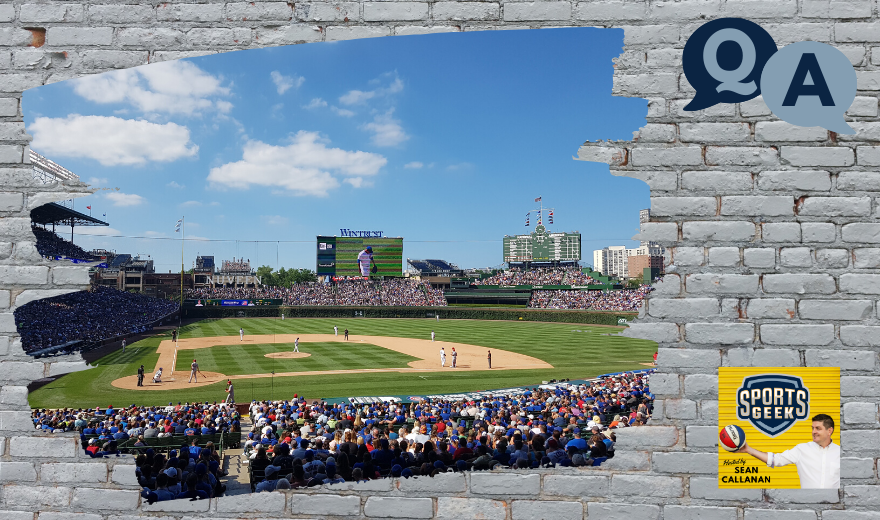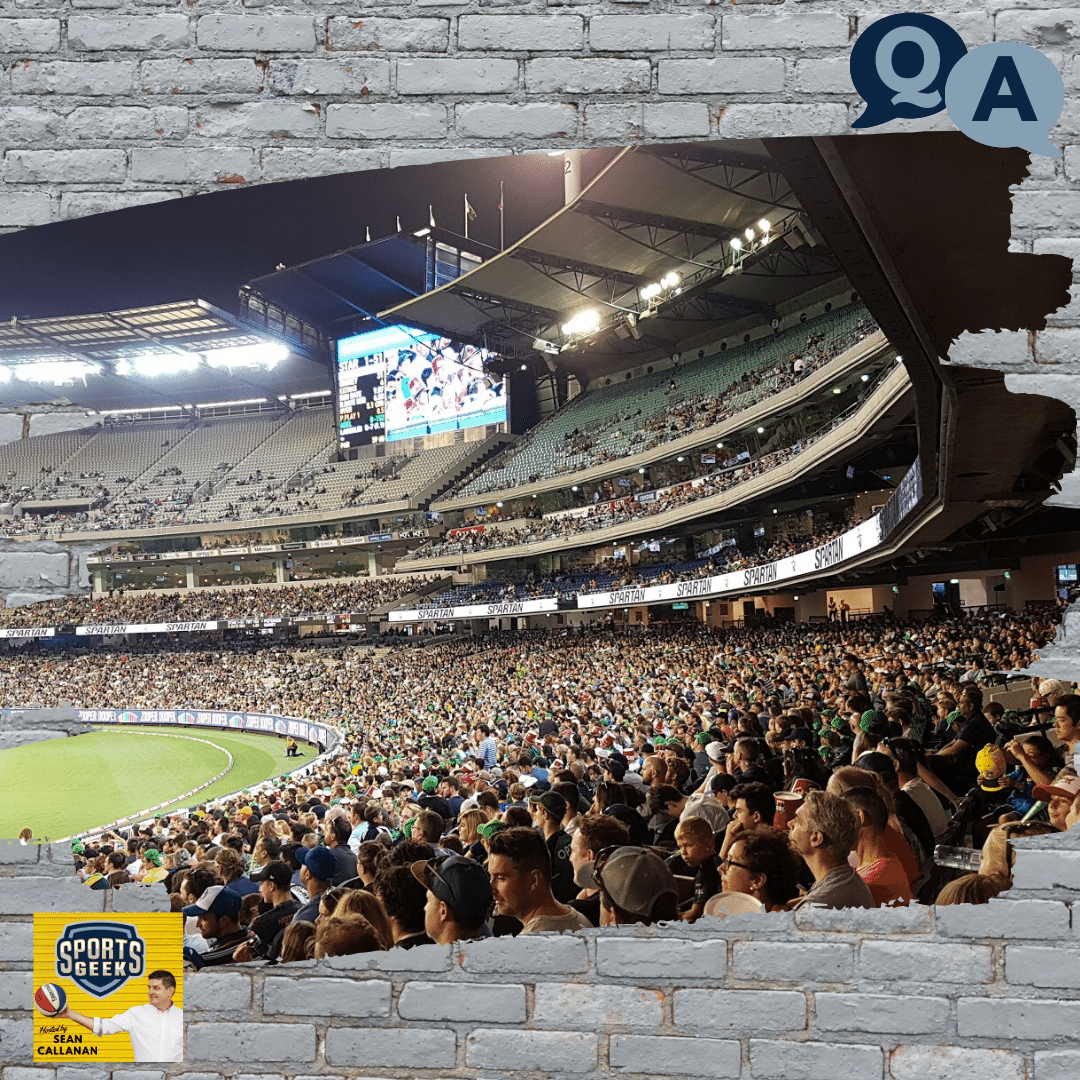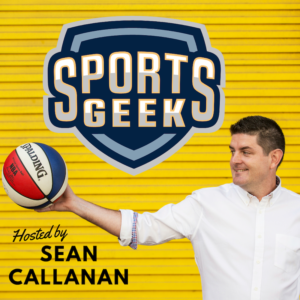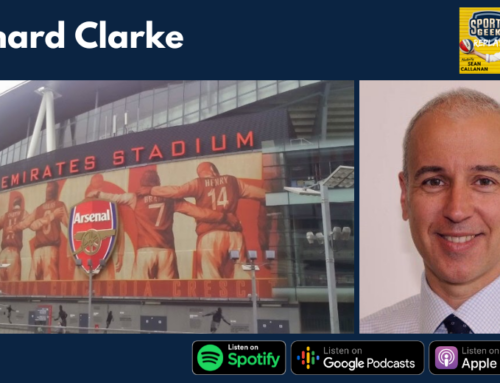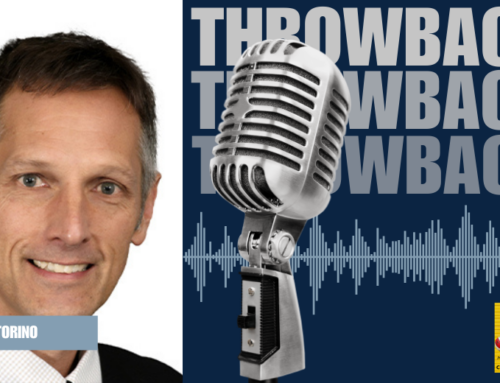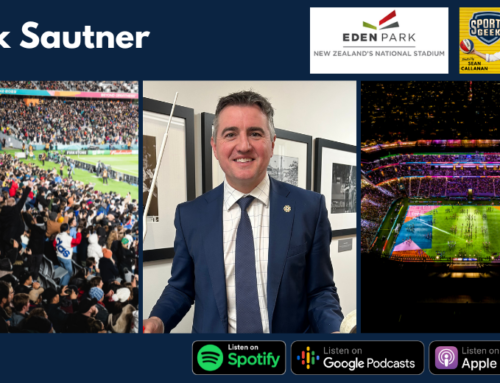On episode #13 of Sports Geek Q&A episode Sean Callanan answers the following questions:
- Where are you seeing the sports partnership landscape going? Amir Zonozi from Zoomph
- What do you think about push for smaller boutique stadiums? Pat Galloway over phone
- What work do you like doing? Sally at Pause Fest
Listen to Sports Geek Q&A for the answers
Can't see podcast player? Click here to listen
Read Sports Geek Q&A answers below
Transcriptions done by robots in Descript app (they are getting better but not yet perfect)
Question one comes from good friend of mine, Amir Zonozi from Zoomph. Where are you seeing the sports partnership landscape going? Well, Amir good question and I look forward to actually discussing this with you because, every time we have a chat, it's very good around this topic. For me. I think more and more sponsors are moving more and more around conversion and data and data acquisition and customer acquisition and real results. And that is why I'm so bullish on Digital to Dollars. That's why my goal for the industry, is, is for digital to be the number one revenue source for sports by 2030. I truly believe that because I think sports teams will have, do, have right now active and engaged customer bases or fan bases as we call them in sport, far more engaged than regular, brands. You know, if you're a bank or loan vendor or a car dealer. You don't have such avid engaged fans, the sports fans, as sports teams and leagues do. so I think most brands and partners entering the space will, we'll start getting to the pointy end of how can you help us acquire a customer? How can you help us engage a customer? How can you help us engage our customers? and you can do that very well by digital. So. Well, this is where I think the important point of understanding the value of what you're doing in the digital space is understanding the value of what you're producing. from a social point of view. and the value that that represents to those brands, they have a hard time reaching those social audiences. The algorithm is affecting them the most. and then the other part is how can the sports team or league, best. activate and, and recruit and acquire those customers for the brand. and that's where I think the Know your Pitch pillar kicks in for Digital to Dollars. rather than getting the campaign or getting the digital campaign from a external agency of the brand, and I said, can you please run this campaign for us? but I want to get, you know, more people to sign up for their energy, retailer, or more people to swap over to out their telco. And the campaign falls flat. nobody wins. whereas I think there's a massive opportunity in the sports partnership space to bring that work in house, to bring that work in, into the team and league environment and activate that appropriately and deliver on results. Because I think that's where we're headed. It's all about results. it's going to be less, less about, the brand awareness piece. I think there still will be people buying logos on jerseys and led signs and stadiums and those kinds of things. But, The reason I think digital has so much upside is, it's infinite. There's only so many, so many spots. I'm in a stadium that can be filled. Even with led, we can swap out the sponsor signage that as many times as we like. but there is a limit. There's no limit to digital. So I think, there's a real, real big opportunity for supports to understand that space and show how they can, deliver results. But making sure that. Part of the story is telling the , telling the sponsor, we can't just run this campaign for you if your fans don't know who you are. So that brand building piece, that the branded content piece, making sure the fans have an introduction to your brand is really important. And it's mandatory. You can't do, you can't just do the campaign by itself. So tying those two pieces together, that's exactly what we do with Digital to Dollars. I do think it's going to be, I think there's going to be some commercial folk that are going to get burned by just producing more, just offering results, or forget or not, or not tackling that, that component of the, of the partnership. I think that's going to be really important going forward.
Transcriptions done by robots in Descript app (they are getting better but not yet perfect)
Question two, was triggered off a n article that, I shared on LinkedIn and, and Pat Galloway got me a call, for a followup article. And these question was, what do I think about the push for smaller boutique stadiums? And it's very much the, the device, a smaller stadium versa versus a bigger stadium. I will share that. I will have shared the links to this article by the time this episode goes out. But the main theme from my point of view in comparing the small versus the big stadium and an, and I guess in this, in this region, we've, we've seen some recent cricket matches, big bash matches in large. Stadiums like the mcg with, with only 13 or 14,000 people. which makes for a really poor experience. you know, 30,000 people in a 100,000 seat stadium doesn't look right, both on TV. And it's not a great experience in stadium. And, and for me, the, the push way, that doesn't really mean the stadium size isn't so much to matter. I think the challenge in front of all stadium operators and sports in general is making sure the fan experiences of. Oh, he's the best one there. And how you go about that. And the other, I guess the reason for smaller boutique stadiums, it potentially offers that you've got less people to cater for. less pressure to fill. Kevin has stadiums. and then you can provide a really engaging experience. so I think, you know, I think that's the main reason. I mean, we're seeing trends, you know, in, in the UK and premier league and smaller stadiums, obviously lucky enough to tour stadiums like, bank of America. And we LAFC ply, that smallest stadium is easy to fill. And then the atmosphere of that stadium is amazing. So that's where I think there is a, there is a trend, I think in the, unfortunately in this, in the Australian market, There's a these issues, around who pays because most of the stadiums are paid for by government. there is, they always seem to roll up the size of the state into the biggest venue, sorry, to the biggest event. So they were always building the stadium to cater for the grand final or an international match and those kinds of things are international concert. which might happen five to six times a year. But there might be 50 to 60 more content days or more that don't feel it. So it's these, that balance. I don't think if they were more privately owned stadiums, that, that have also then all the opportunities to commercialize them with different areas. I think it would be very different. So. Keeping on what Lou Sticca in the, his table doing, a wishing you nod and building their own stadium in for Western United down towards Geelong . it will be interesting to see how that develops. But, for mine, the debate around smaller than peak stadiums always comes back to. Fan experience. Some of that will be, will be technology and what it can offer, but also it just can be what is the experience like what is the food like, what does the beer available? How do you cater for families? How easy is it to get in and out of the stadium? I think they are more important than the actual size. The size is a starting point to say what's the ultimate size from a revenue point of view and a fan experience point of view.
Transcriptions done by robots in Descript app (they are getting better but not yet perfect)
The last question, came from Sally, at a recent conference called PauseFest. she asked me what work, what work do I like doing? which is a great question. had a really good discussion about the different work that people do. I dove on this topic with Sally. I guess from, from my point of view, I think it, part of my DNA. My dad was, was a teacher for many, many years. I think I have some of his, his genes. obviously. but obvi, So I liked the teaching component. So I like, running workshops and walk walking people through the Digital To Dollars process, or, you know, whether that's in a small group or whether it's online in a webinar or if it's in a large group at a, at a, at a conference, like say where I, where I did a Digital To Dollars workshop with 300 people. I really enjoy that. I enjoy going up on stage. I enjoy speaking, or moderating. so if anyone's got a conference, or wants to speak, or on all things digital and fan engagement and opportunities in the space, I've got a few different keynotes and that space. I really do enjoy, speaking. So mostly this is that piece of what I'm doing. Those doing those workshops. And helping people in that training piece. but then when I'm talking about like, like client work and those kinds of, workshops that we do, some of the ones that I like the best are diving in on, on your content pillars and what you want to do. And then how you go about doing it. so helping unlock some really cool creative ideas. I don't necessarily have to be the one that comes up with the idea. As long as the room comes up with the idea, I get a massive buzz out of it. and then what I like to do with those ideas is then bring that commercial lanes and that data lense to it to go, that's a really cool idea. This is how we pitch it to commercial. This is how we pitch it to the ticketing and membership folk. He's, Hey, you get multiple outcomes out of the cool idea. so you're not just content the contents like, so I really enjoy when I'm out there doing those. Those workshops or on calls with clients, sort of diving in on what can we do next that will impress everybody but mainly impress our fans. but also. widening the scope for the commercial half of the content team to make sure that there's some real commercial value coming out of it. So thank you very much. Sally or I did hit on a few of the same beats there of our conversation at PauseFest , thank you very much.
Pick my brain
Want some help on a campaign, sponsorship or content but don’t know where to start? Book a time with Sean Callanan for a Pick My Brain session.
The Pick my brain session is a two-hour video consulting session where you can get Sean’s thoughts and opinions on ticketing or sponsorship campaigns, campaign development and digital content review.
See you at SEAT in Las Vegas
Join Sean at SEAT Las Vegas in June. All attendees will have the option to claim a discounted Pick My Brain session.


